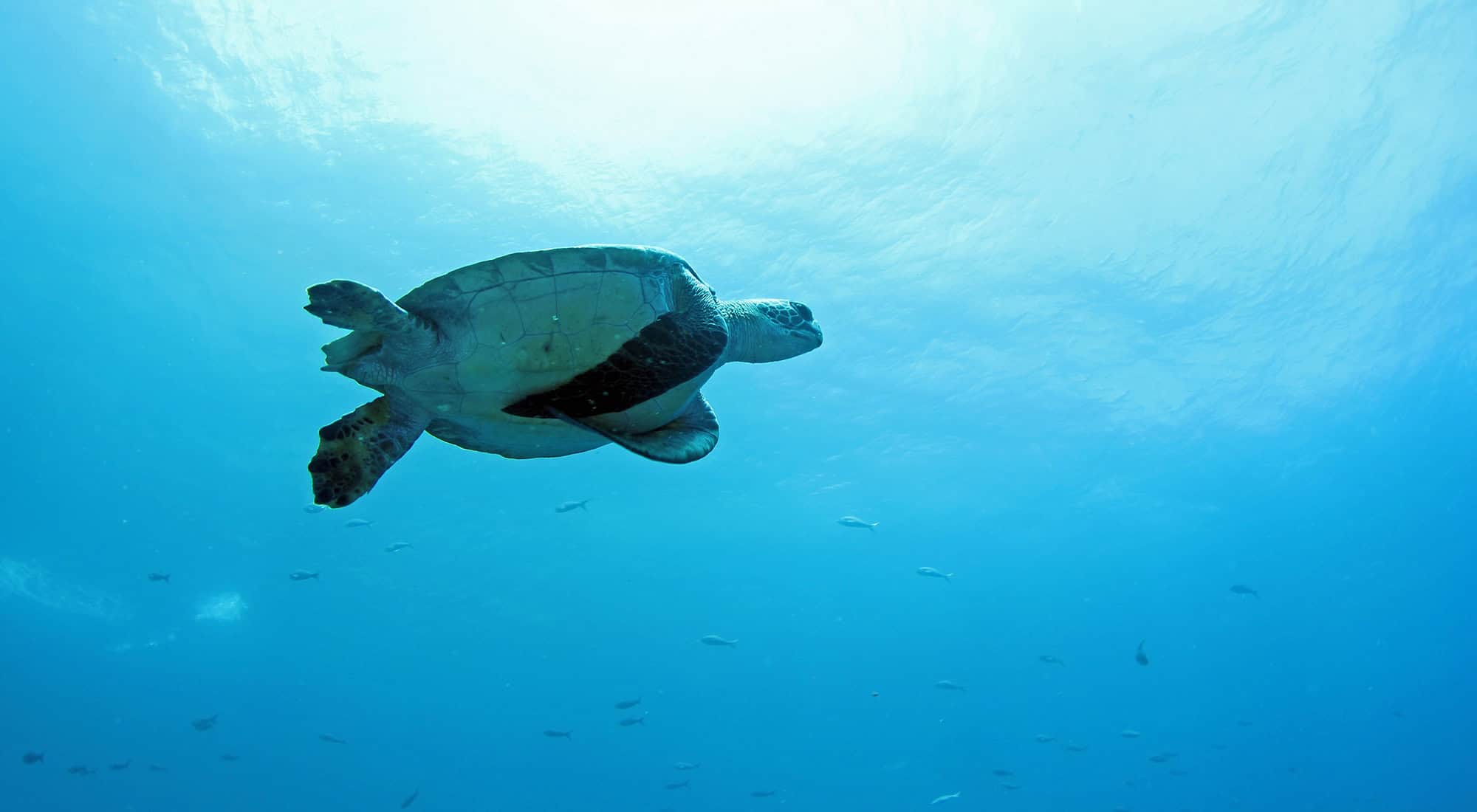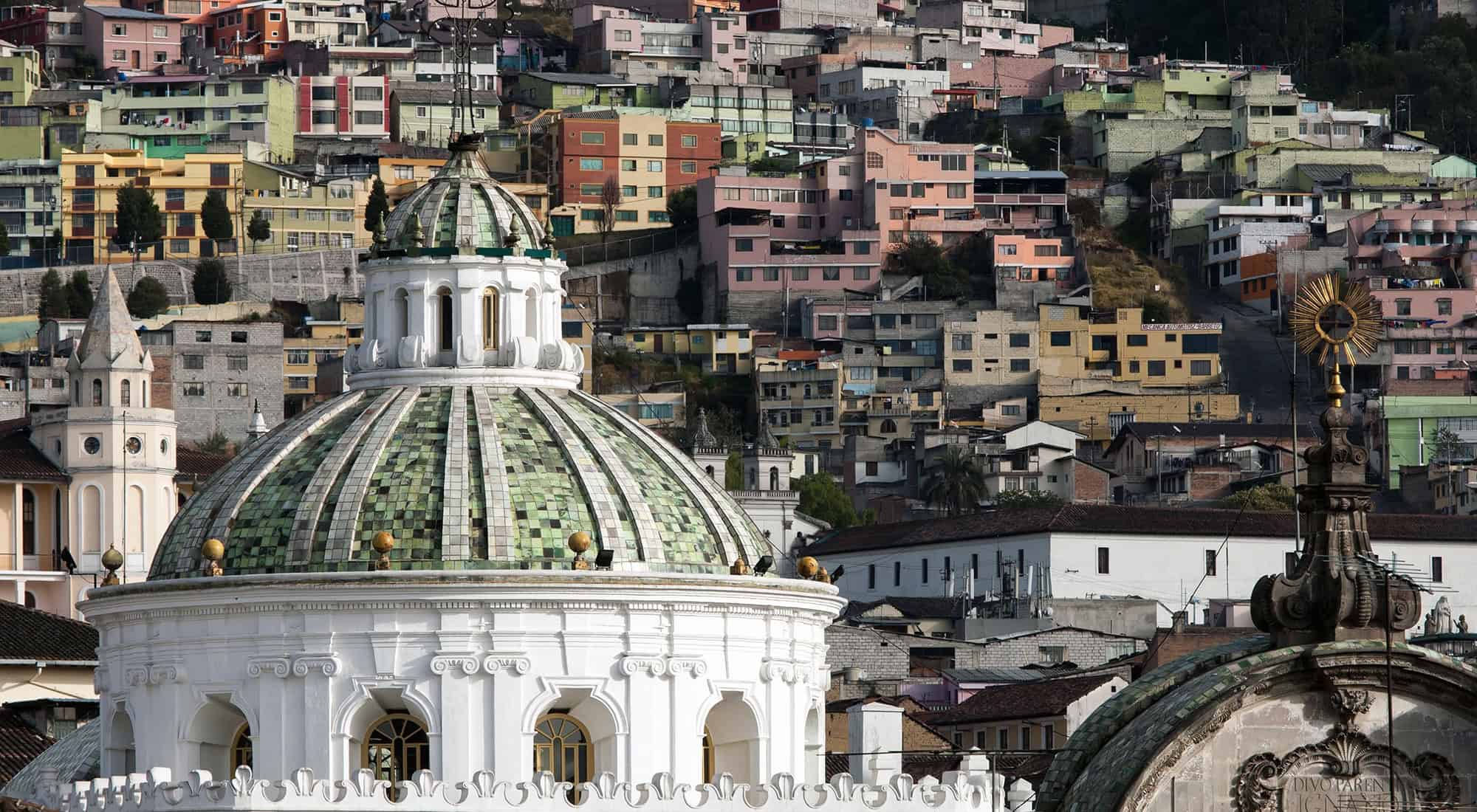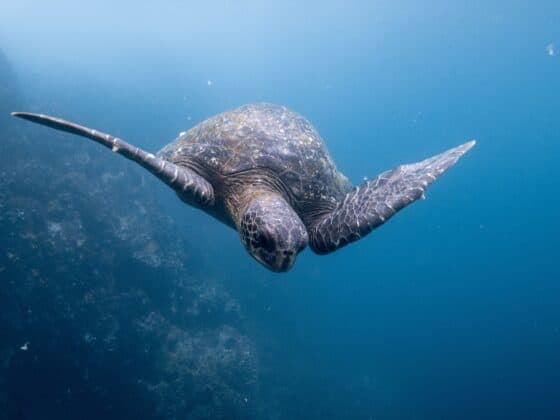The Galápagos are among the most desirable scuba diving destinations in the world. So what’s the big attraction?
Marine Life
There is a profusion and variety of animals here that you won’t find anywhere else, and so close up that you won’t mind the low visibility. Not just reef fish, schooling fish and pelagic fish, but also sea lions, turtles, whalesharks, schools of hammerheads, flocks of several species of rays, diving birds, whales and dolphins; an exuberant diversity including many endemic species. You could be with a Galápagos marine iguana, the world’s only lizard that dives and feeds in the sea, or perhaps meet a glittering man-sized sailfish. Make no mistake, this is no tame theme park: Galápagos is adventure diving, where any moment could surprise you.

Dive sites:
Santa Fe
This site offers wall dives, rock reefs, shallow caves, fantastic scenery and usually has clear calm water. You can dive with sea lions, schooling fish, pelagic fish, moray eels, rays and Galápagos sharks. Like everywhere in Galápagos, you should expect the unexpected.
Seymour Norte
You can see sea lions, reef fish, hammerhead sharks, giant manta rays and white tip reef sharks. Occasionally whalesharks, humpback whale and porpoises.
Floreana Island
The dive sites are offshore islets, each with its own character and scenery. Devil’s Crown is a fractured ring of spiked lava around coral reefs. Champion is a little crater with a nesting colony of boobies, sea lion beaches and underwater rocky shelves of coral and reef fish. Enderby is an eroded tuff cone where you often meet large pelagics: rays, turtles, tunas and sharks. Gardner has a huge natural arch like a cathedral’s flying buttress. These and other islets offer diving with reef fish, schooling fish, sea lions, invertebrates, rays, moray eels, white tip reef sharks, turtles, big fish including amberjack, red snapper, and grouper. Sometimes you can see giant mantas, hammerheads, Galápagos sharks, whales, seahorses, and the bizarre red-lipped batfish.
Gordon Rocks
Just north of the Plazas are two large rocks that are all that remains of the rim of a long-extinct volcano. On the inner side of the collapsed caldera rim the seabed is a mass of rocks jumbled over each other, while on the outer wall the sea drops away into thousands of feet of water. Currents here are exceptionally strong and the local name for the dive site is La Lavadora (washing machine). Here you can see schools of hammerheads, amberjacks and pompano, eagle rays, golden cowrays, whitetips and turtles.











